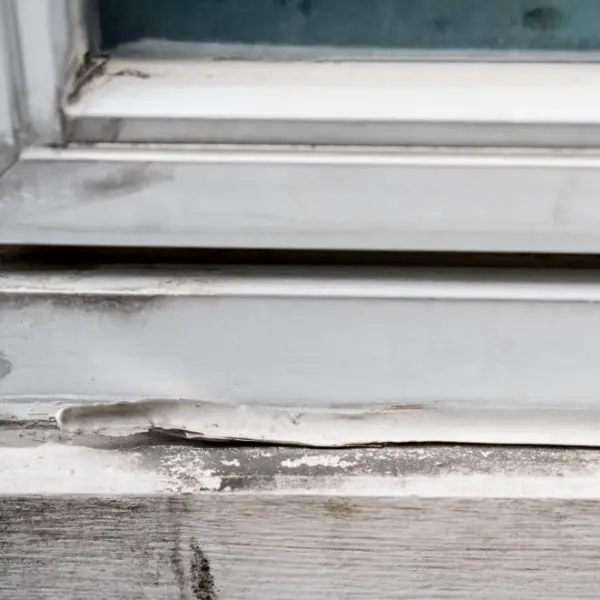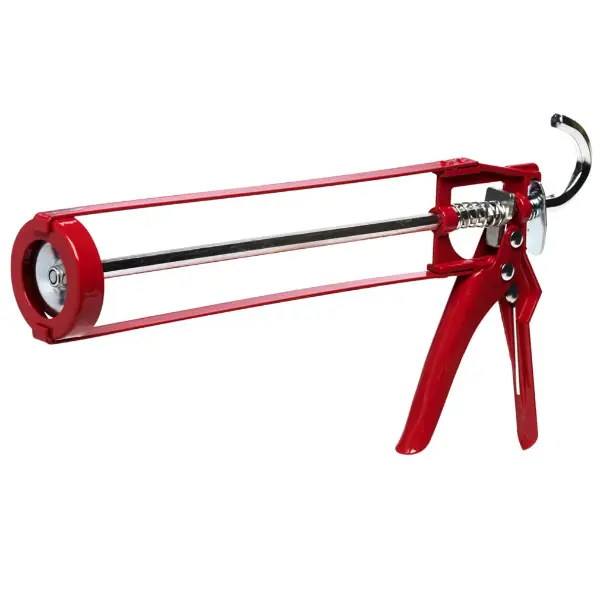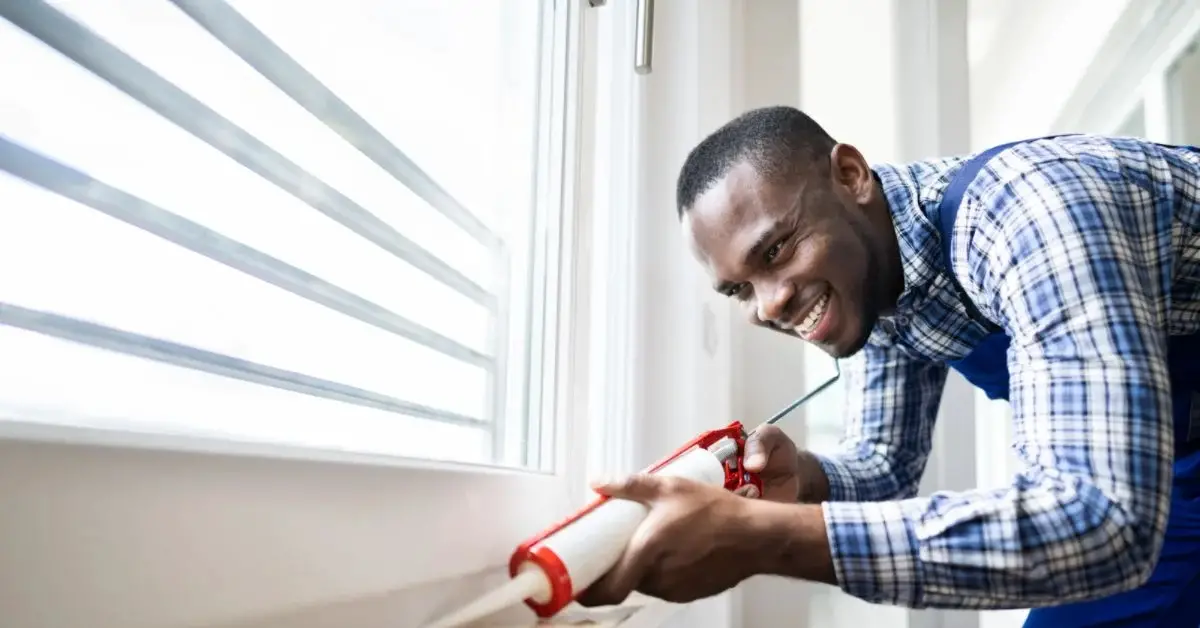How to caulk windows – a big impact for a small cost
People often wonder how to caulk windows and what the benefits are for their homes. In the age of rising energy prices, caulking windows is a cheap and easy way of increasing the energy efficiency of your home.
While it may not be immediately obvious, our windows can be a significant source of energy loss. They can also cause water damage and other issues.
In this blog post, we will discuss the benefits of caulking windows, what equipment you will need and a full step-by-step guide.
By the end of this post, you will have the knowledge and confidence to tackle this home improvement project and enjoy the benefits of a well-sealed and energy-efficient home.
What is window caulk?
Caulk is a flexible material that fills gaps and seals joints, which prevents air and water from getting in or out of your home.
Caulking your windows can have a variety of benefits for your home. Additionally, caulking is one of the most affordable and simple DIY tasks that can be undertaken, making it a great choice for those new to home improvement projects.

Benefits of caulking windows
When looking for tips on how to caulk windows, it is important to first understand the benefits of the process.
Caulking your windows can provide a variety of benefits for both your home and your wallet.
Here are some of the main benefits of caulking windows:
- Increased energy efficiency: Caulking seals gaps and cracks around your windows, which can help to prevent air leaks and drafts. This means that your home will be better insulated and your heating or HVAC system won’t have to work as hard to maintain a comfortable temperature.
- Reduced utility bills: As caulking, your windows can improve your home’s energy efficiency, it means you can also reduce your utility bills. You’ll be using less energy to heat and cool your home, which can translate into significant savings over time.
- Enhanced indoor comfort: Drafts and air leaks can make your home feel uncomfortable, particularly in extreme weather conditions. By sealing gaps and cracks with caulk, you can improve your indoor comfort and maintain a more consistent temperature throughout your home.
- Protection against water damage and air infiltration: Water is very good at seeping into your home through gaps and cracks around your windows. Any moisture that gets in can lead to other issues such as water damage and mould. Caulking helps seal your windows to prevent water infiltration and other associated issues.
- Extended lifespan of windows: Properly sealed windows can last longer than those that are not sealed. Moisture can wreak havoc on your windows and can be easily prevented with proper sealing.
Overall, caulking your windows is a simple and effective way to improve your home’s energy efficiency, protect against water damage, and enhance your indoor comfort.
Your windows can play a big role in problems with condensation and damp. View our range of articles and guides for more information on treating damp in an old house.
How to caulk windows – What equipment will I need?
Thankfully to process of caulking your windows requires very little equipment. Even if you don’t already own these pieces, they can be sourced relatively cheaply online or at your local DIY store.

- Caulk gun: This is a handheld tool that is used to apply the caulk to your windows. Caulk and other sealants typically come in tubes which are inserted into the caulk gun. You can then control the delivery of the caulk with great precision and accuracy.
- Caulking tubes: Caulking tubes contain the caulk that you will apply to your windows. Make sure to choose a high-quality caulk that is designed for use on windows and doors.
- Caulking tool or putty knife: This tool is used to smooth out the caulk and remove any excess.
- Cleaner or solvent: Before you can apply the caulk, you’ll need to clean the area around your windows. You can use a commercial cleaner or a solvent like rubbing alcohol to remove dirt and debris.
- Painter’s tape: This is optional, but it can be helpful for creating clean lines and preventing the caulk from getting on surfaces where it shouldn’t be.
This Kinda Old House Top Tip
You can purchase a multi-purpose caulk tool that can help both remove the old caulk and apply the new stuff. A cheap and helpful tool that will last years, if not decades!

With these tools and materials, you’ll be ready to tackle your window caulking project. The most important part is the caulk you use so opt for a high-quality brand if you can.
Before you start – Where not to caulk around windows
While caulking around windows can provide a variety of benefits, it’s important to know where not to caulk. Here are a few areas around your windows that you should avoid caulking:
- Weep holes: Weep holes are small openings at the bottom of your window frame that allow water to drain out. These holes are essential for preventing water damage and should not be sealed with caulk. It is also important to clean out any debris from the weep holes regularly to ensure proper drainage.
- Moving parts: If your windows are designed to open and close, make sure to avoid caulking around any moving parts. This can prevent the windows from operating properly and can lead to damage over time.
- Cracks larger than 1/4 inch: While caulk can be effective for sealing small gaps and cracks, larger cracks should be repaired with a different material, such as a foam backer rod or wood filler. Attempting to fill larger gaps with caulk can lead to ineffective sealing and can waste caulk.
- Decorative trim: If your windows have decorative trim or moulding, avoid caulking around these areas. This can interfere with the aesthetic of your windows and can make it more difficult to remove the trim if needed in the future.
By avoiding these areas when caulking, you can ensure that your windows are properly sealed while also maintaining their functionality and aesthetic appeal.
Where to caulk around a window panel?
When caulking around a window pane, there are several key areas that you should focus on to ensure that your window is properly sealed and insulated.
- The section between the window frame and the wall
- The gap between the window frame and the window sill
- The area between the window frame and the window itself
- The corners of the window frame
- Any gaps or cracks in the window frame
How to caulk windows – Step by step
Now you’ve got all the equipment and some key information about what not to do, you can begin caulking your windows. Here is our full step-by-step guide:
- Remove old caulk – the first part of the job is to gently remove any old caulk. The most important part is ensuring you are only removing old caulk and not parts of the window itself. Normally old caulk will have a yellowish tinge and a rubbery consistency. Remove with a caulking tool or a Stanley knife taking care to not damage the wood or the PVC window frame.
- Cleaning – The next step is important to ensure you achieve the best possible finish. Clean the area around your windows with a cleaner or solvent. This will ensure that the surface is clean and free of debris.
- Applying tape: If you’re using painter’s tape, apply it along the edges of the gap or crack before applying the caulk. This will create a clean line and prevent the caulk from getting on surfaces where it shouldn’t be.
- Loading the caulk gun: Cut the tip of the caulk tube at a 45-degree angle. Make sure to cut the tip small enough to fit the gap or crack you will be caulking. Load the caulk tube into the caulk gun ensuring it fits securely. If done correctly the trigger of the caulk gun will now give some resistance.
- Applying: You can begin applying steady pressure to the trigger. Move the caulk gun along the gap or crack, applying a steady, even bead of caulk. If you can’t get enough caulk to flow, try cutting more off the end of the tube.
- Finishing: Use the caulking tool or putty knife to smooth out the caulk and remove any excess. Wipe off any excess caulk on the tool or putty knife with a rag. Sometimes applying some water to the tool will help create the smoothest possible finish.
- Drying: Allow the caulk to dry according to the manufacturer’s instructions. This can take anywhere from a few hours to a full day, depending on the type of caulk and the temperature and humidity in your home. Once the caulk is dry, remove any painter’s tape if used. You can then paint over the caulk if desired to match the surrounding area.
By following these steps, you can effectively caulk your windows and improve your home’s energy efficiency, protect against water damage, and enhance your indoor comfort.
Overall, caulking your windows is a simple and cost-effective way to improve the comfort, energy efficiency, and overall value of your home.
It’s a job that is very achievable, even for a DIY beginner and it can be undertaken with relatively little equipment for minimal cost.
By taking the time to properly seal your windows, you can enjoy the benefits of a more comfortable and efficient home, while protecting against potential damage and improving your indoor environment.
If you are looking for other ways of improving the energy efficiency of your home, check out our range of renovation guides.



Leave a Reply